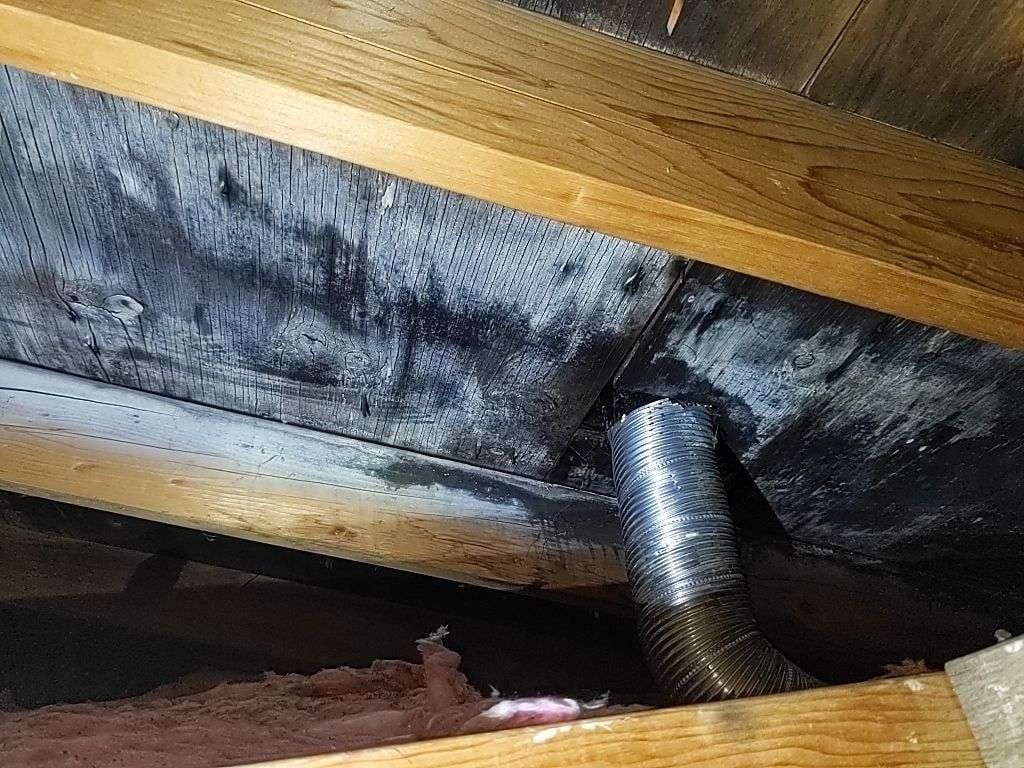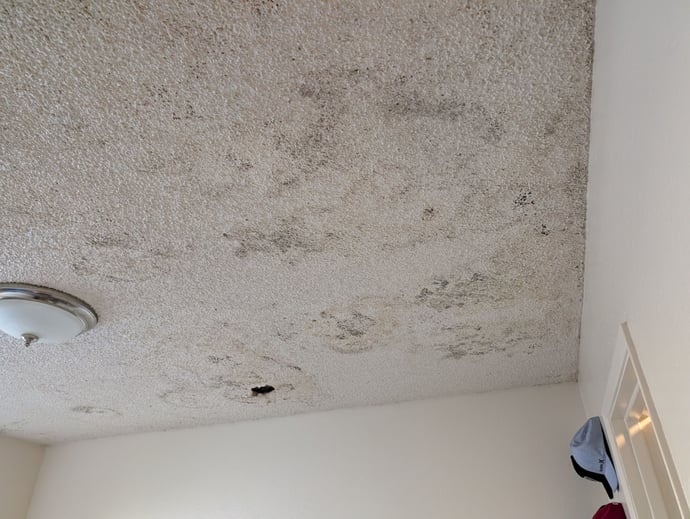What Are the Signs You Need a Mold Inspection in Your Seattle Roof?
August 30th, 2022
4 min read

Are you wondering if your roof or attic has mold but not sure how to tell? Do you know what signs to look for before it becomes a major issue?
Unlike a typical roofing contractor, we at RoofSmart offer mold remediation services in-house. This means that we help customers get rid of mold in their homes and prevent it from returning, in addition to providing our regular roofing services.
In a wet, humid environment like the Greater Seattle area, we discover mold in the attic all the time. We’ve identified and treated mold in hundreds of homes.
This article will show you how to spot mold early, understand what causes it, and learn what happens if you ignore it.
We’ll walk you through the tell-tale signs, what leads to mold, and what to do next if you suspect a problem, especially if you're a Seattle homeowner dealing with constant rain and humidity.
How Can I Tell If I Have Roof Mold in Seattle?
Several signs and symptoms pop up when your roof has a mold problem.
If you notice any of the following problems, it’s time to call a professional before you have a major issue to deal with:
A Distinctive Odor

Mold has a very distinctive rancid smell, much like rotting food in your refrigerator. If you notice this smell in the vicinity of your attic, you most likely have a mold infestation problem and need to act quickly to have it taken care of.
But often you don’t notice bad smells in your own home, because they “creep up on you” slowly over time. It’s usually most potent in the attic itself, but use caution if you plan on investigating yourself.
Respiratory Issues
If you or someone in your home develops any sort of respiratory issues, this can be an indicator that you have mold, especially if you’ve already noticed one or more of the other signs of mold. Or, you might notice that your respiratory issues worsen.
Although there are other causes for breathing problems, it might be worth it to have someone check out the attic to see if it has mold (just in case).
Ghosting

Ghosting is when mold has grown in the attic and begins to bleed through your ceiling. It looks like black lines running along the ceiling joists.
This is an indicator that your mold problem is very bad because the mold has collected enough to start seeping down.
A Hot, Stuffy Attic
When you go up to your attic, it should feel fairly similar to the rest of your house. It might be slightly warmer in the summer or colder in the winter, but there shouldn’t be a drastic difference.
If your attic is hot and humid, that is a sign that you either already have mold or you will soon. Your attic should have good airflow to prevent buildup of moisture and regulate the temperature.
What Causes Mold in the Attic?
Attic mold needs a dark, damp area that is poorly ventilated to thrive. There are a lot of factors that contribute to growing mold.
If you have mold in your attic, your roof most likely has all (or many) of the following issues:
Roof Leaks
Mold enjoys growing in a very moist and dark environment, so a damp roof is the perfect breeding ground. Roof leaks happen all the time in Seattle’s damp, rainy environment. Whether your roof eventually wears out over time or has a hole due to poor installation, your roof will probably leak at some point if you’re a Seattle area homeowner.
Roof leaks are a common cause of mold in the attic because they cause excess moisture to build up in the attic.
This is a problem because roof leaks can be extremely difficult to notice. Often, a lot of water has to pool up before water stains appear on your ceiling. By then, you probably already have mold in your attic.
If you do not get a leaky roof fixed as soon as possible, you will have (at least) two problems to deal with instead of just one.
Water Damage and Roof Rot
If you see signs of water damage like dark spots on the walls or ceiling, there’s a good chance you have a mold problem or that you are about to have one.

When you experience roof rot, it’s another good indication that you have a mold problem because the two often go hand in hand. Check the paint around your dormer windows for peeling and your walls and ceiling for blisters and cracks.
Remember, mold doesn’t always come in white. You should be looking for a variety of colors, including black, green, and blue.
Poor Ventilation
Proper airflow in your attic is what is supposed to prevent mold from growing in the first place. So, if something has gone wrong with your attic ventilation, then it will likely cause mold.
Attic ventilation can go wrong for many reasons:
- It is not up to code: Requirements are updated annually, so it is easy for older homes to fall behind. Seattle has a lot of homes that are 50+ years old, meaning that their ventilation is super outdated and probably hasn’t been checked in a while. Seattle follows the national building code requirements for proper ventilation.
- It is not balanced: For example, you might have way more exhaust ventilation than intake ventilation. This is a problem because not enough air will get in. Or, air will enter at the top of the roof and not flow through the entire attic.
- The intake ventilation might be blocked
What Happens When You Leave Mold in the Attic Untreated?
If you do not treat mold in your attic, the issues that you already have will continue to worsen.
- The water-damaged, rotted wood will continue to deteriorate and can potentially cause structural damage to your roof. The wood will eventually fall apart, causing sections of your attic or roof to collapse.
- The roof leak will continue to deteriorate the wood and provide an ideal environment for the mold to continue growing and spreading.
- If you experience signs of ghosting, the mold will continue to seep through the roof into your living space.
- Your health issues will more than likely worsen as the mold continues to spread.
Why Does Getting Rid of Roof Mold Quickly Matter?
Now you know the signs of attic mold and that leaving mold untreated can escalate from minor damage to major repairs, compromising your home’s structure and your family’s health. This is especially important for Seattle homeowners, where humidity is a constant threat.
Now that you know the signs of mold and its potential consequences, you’re probably wondering what to do next and who can help you get rid of mold in your attic.
Check out our article “What Should I Do If I Have Mold In My Attic?” to learn how to spot and solve mold problems before they cause expensive repairs.
Jim Singleterry is the CEO and founder of RoofSmart. He is passionate about getting to the root of each customer's roofing problems and helping them find the right solution for their roof.
Topics:



